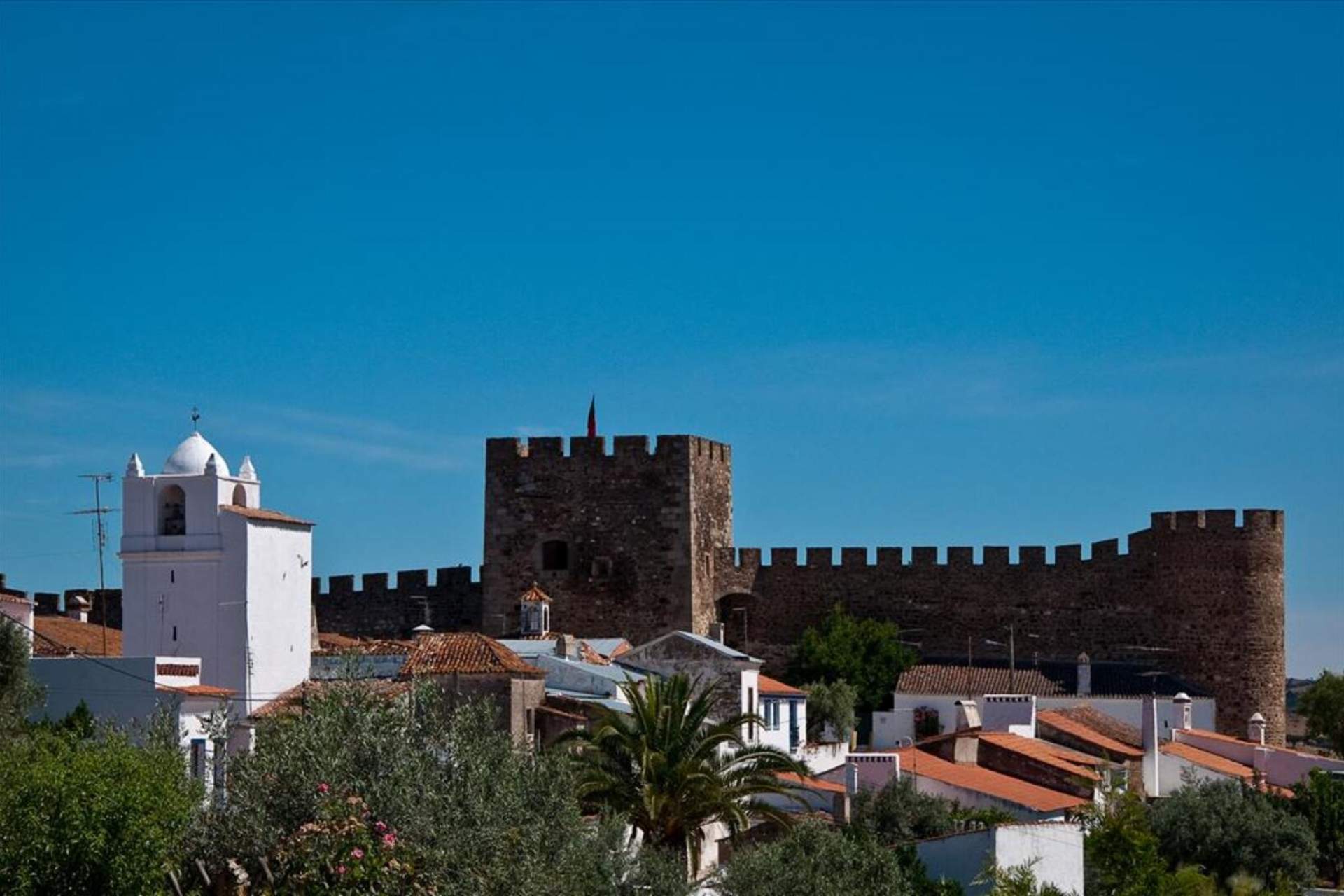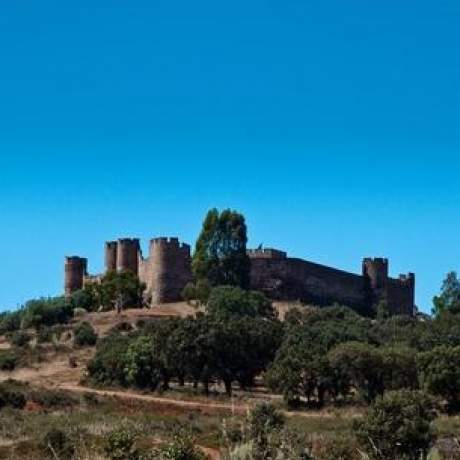
Alandroal Castle
Located at the highest point of the village, Alandroal Castle, classified as a national monument, is a military construction from the end of the 13th century and is considered to be one of the best examples of Mudéjar art in the Alentejo.
This shows that, despite the change in powers and the incorporation of the territories into the Portuguese crown, the Muslim communities of "mouros forros" remained in the southern territories.
One of the greatest traces of this permanence is the headstone located in the right tower of the castle door, where the master builder not only identifies himself as the Muslim "Mouro Galvo", but also begins the headstone’s text with a version in Latin characters of the motto used by the Nazarite kings of Granada, invoking Allah.
The inscription has been considered as one of the most important marks of Mudéjar art in our country and reveals the existence of an Islamic contractor responsible for carrying out the building work on the castle between 1294 and 1298, commissioned by the Order of Aviz. It shows the understanding between the dominant Christian majority and the Islamic minority that lasted, as well as the merit that was still enjoyed by the artists trained in the "school" of Al-Andalus.
The Islamic legacy of the castle is also evidenced by some features that can be fitted into the dominant military architecture of the fortifications of Al-Andalus, such as the predominance of quadrangular towers with the same configuration as the towers on the Islamic walls of Seville, and the small window in the castle citadel, built on the inside in solid brick but with the outside in marble, designing an opening with a horseshoe arch framed by an "alfiz" or frame, typical of decorative systems from the final phase of Islamic rule.
Close
Search results for:
No results were found matching your search.
Information available soon.



